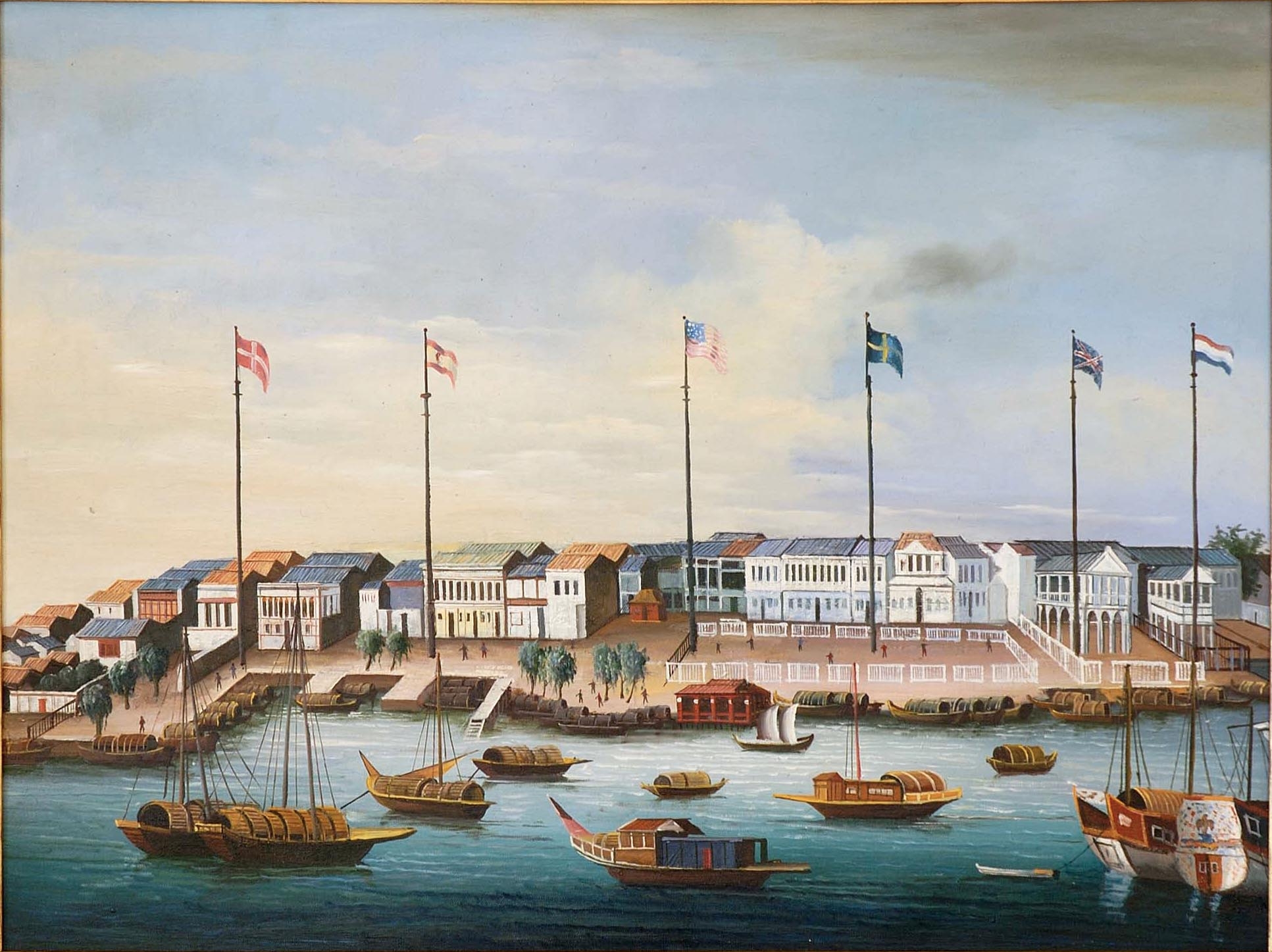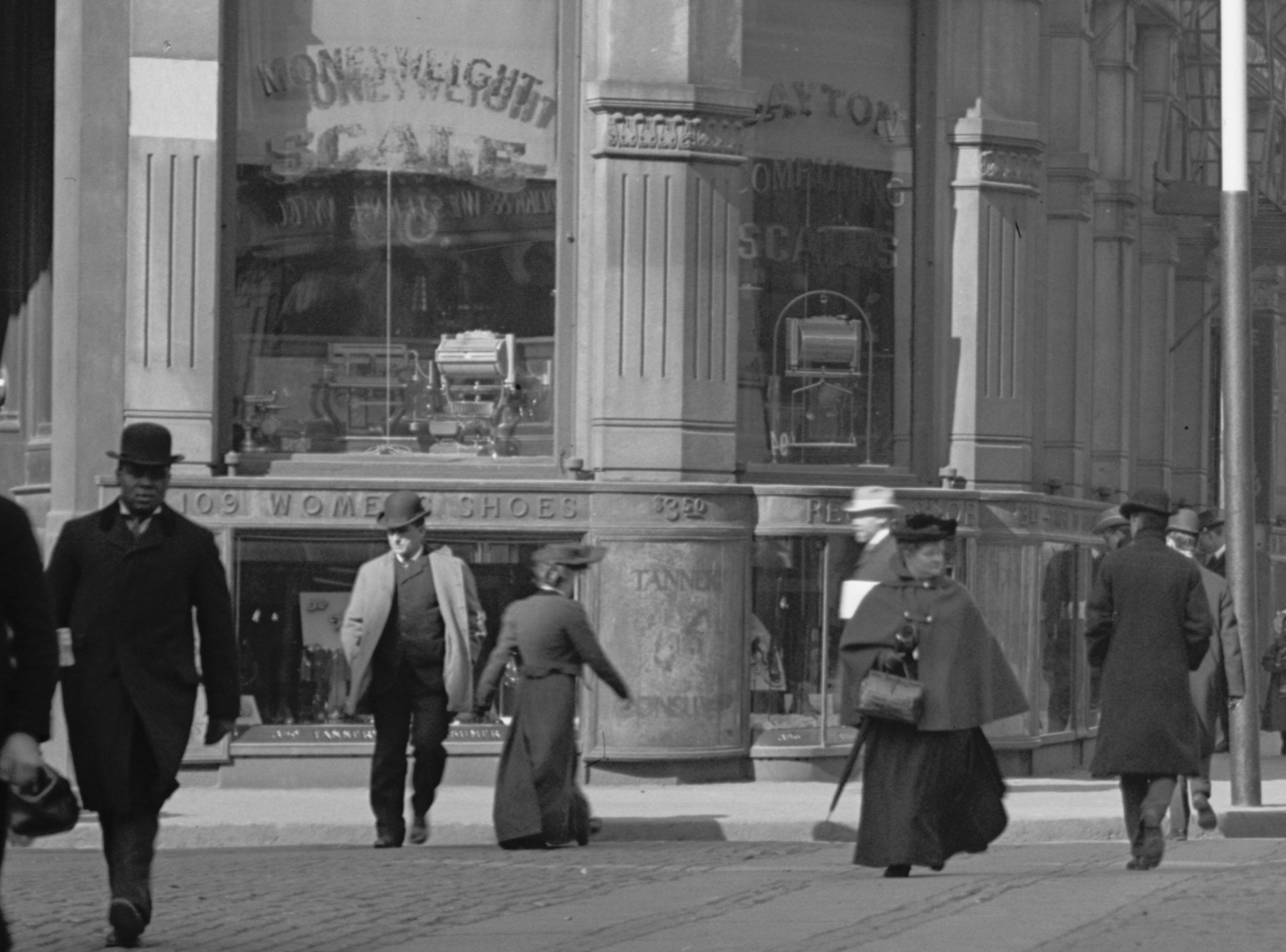|
Joseph Barrell (merchant)
Joseph Barrell (1739-1804) was a merchant in Boston, Massachusetts in the 18th century. During the American Revolution he owned ships commissioned as privateers, such as the Vengeance, ca.1779. In 1792 Barrell was "elected to the board" of Massachusetts branch of the newly established Bank of the United States, along with "George Cabot, Jonathan Mason Jr., ... and Fisher Ames." Biography As a merchant Barrell imported goods from overseas. For instance, the Hannah, commanded by William Haydon, sailed in May 1780, probably from Amsterdam, loaded with cargo for Barrell in Boston: "German steel, ... china ware, earthen pots, house brushes, spices, linens, velvets, writing paper, children's toys (among the rest a furnished kitchen valued at over six florins), wafers, flat-irons, tea and tea-kettles and window-glass." Barrell's notable wealth also derived from his activities as "contractor to the French fleet." Around 1787, "a group of merchants led by Bostonian Joseph Barrell, hav ... [...More Info...] [...Related Items...] OR: [Wikipedia] [Google] [Baidu] |
Old China Trade
The Old China Trade () refers to the early commerce between the Qing Empire and the United States under the Canton System, spanning from shortly after the end of the American Revolutionary War in 1783 to the Treaty of Wanghia in 1844. The Old China Trade represented the beginning of relations between the United States and East Asia, including eventually U.S.–China relations. The maritime fur trade was a major aspect of the Old China Trade, as was illegal trafficking in opium. The trade era overlapped the First Opium War, which resulted from an attempt by China to enforce its prohibition on opium smuggling by Western traders and blockade-runners between 1839–1842. Origins Anglo-American hostilities ceased in 1783 following the Second Treaty of Paris that ended the American Revolutionary War and subsequently freed American trade from British control. At the time, increased global demand for tea was one of the primary reasons for a shortage of silver; this was the only curren ... [...More Info...] [...Related Items...] OR: [Wikipedia] [Google] [Baidu] |
Charles Bulfinch
Charles Bulfinch (August 8, 1763 – April 15, 1844) was an early American architect, and has been regarded by many as the first American-born professional architect to practice.Baltzell, Edward Digby. ''Puritan Boston & Quaker Philadelphia''. Transaction Publishers (1996), p. 322-24. . Life Bulfinch split his career between his native Boston, Massachusetts, and Washington, D.C., where he served as Commissioner of Public Building and built the intermediate United States Capitol rotunda and dome. His works are notable for their simplicity, balance, and good taste, and as the origin of a distinctive Federal style of classical domes, columns, and ornament that dominated early 19th-century American architecture. Early life Bulfinch was born in Boston to Thomas Bulfinch, a prominent physician, and his wife, Susan Apthorp, daughter of Charles Apthorp. At the age of 12, he watched the Battle of Bunker Hill from this home on the Boston side of the Charles River. He was educated at Bo ... [...More Info...] [...Related Items...] OR: [Wikipedia] [Google] [Baidu] |
Ferme Ornée
The term ''ferme ornée'' as used in English garden history derives from Stephen Switzer's term for 'ornamental farm'. It describes a country estate laid out partly according to aesthetic principles and partly for farming. During the eighteenth century the original ''ferme ornée'' was Woburn Farm, made by Philip Southcote, who bought the property in 1734. William Shenstone's garden at The Leasowes was also a ''ferme ornée''. Marie Antoinette made a later example at Versailles in the form of the Hameau de la Reine, created between 1783 and 1787, but it was much more for pleasure than for food production. The Dessau-Wörlitz Garden Realm was said to be the largest ''ferme ornée'' in 18th-century Europe. The most complete surviving example is said to be Larchill near Kilcock, Ireland. Stephen Switzer, in ''The Nobleman, Gentleman and Gardener's Recreation'' (1715), describes the practice of the ''ferme ornée'' "By mixing the useful and profitable parts of Gard'ning with the Pl ... [...More Info...] [...Related Items...] OR: [Wikipedia] [Google] [Baidu] |
Somerville, Massachusetts
Somerville ( ) is a city located directly to the northwest of Boston, and north of Cambridge, Massachusetts, Cambridge, in Middlesex County, Massachusetts, United States. As of the 2020 United States Census, the city had a total population of 81,045 people. With an area of , the city has a density of , making it the most densely populated municipality in New England and the List of United States cities by population density, 16th most densely populated incorporated municipality in the country. Somerville was established as a town in 1842, when it was separated from Charlestown, Massachusetts, Charlestown. In 2006, the city was named the best-run city in Massachusetts by ''The Boston Globe''. In 1972, 2009, and 2015, the city received the All-America City Award. It is home to Tufts University, which has its campus along the Somerville and Medford, Massachusetts, Medford border. History Early settlement The territory now comprising the city of Somerville was first settled by Euro ... [...More Info...] [...Related Items...] OR: [Wikipedia] [Google] [Baidu] |
Charles River
The Charles River ( Massachusett: ''Quinobequin)'' (sometimes called the River Charles or simply the Charles) is an river in eastern Massachusetts. It flows northeast from Hopkinton to Boston along a highly meandering route, that doubles back on itself several times and travels through 23 cities and towns before reaching the Atlantic Ocean. The indigenous Massachusett named it ''Quinobequin'', meaning "meandering". Hydrography The Charles River is fed by approximately 80 streams and several major aquifers as it flows , starting at Teresa Road just north of Echo Lake () in Hopkinton, passing through 23 cities and towns in eastern Massachusetts before emptying into Boston Harbor Boston Harbor is a natural harbor and estuary of Massachusetts Bay, and is located adjacent to the city of Boston, Massachusetts. It is home to the Port of Boston, a major shipping facility in the northeastern United States. History .... Thirty-three lakes and ponds and 35 munic ... [...More Info...] [...Related Items...] OR: [Wikipedia] [Google] [Baidu] |
Franklin Place
Franklin Place, designed by Charles Bulfinch and built in Boston, Massachusetts, in 1793–95, included a row of sixteen three-story brick townhouses that extended in a 480-foot curve, a small garden, and four double houses. Constructed early in Bulfinch's career, Franklin Place came after he had seen the possibilities of modern architecture in Europe and had determined to reshape his native city. It was the first important urban housing scheme undertaken in the United States, and the city's first row-house complex. However, years of decline and the push of industry into the area forced its demolition in 1858. Tontine Crescent The name "Tontine" derives from a financial scheme originated by Neapolitan banker Lorenzo de Tonti, which he introduced in France in the 17th century. Money for the enterprise was to be raised by selling shares of stock to the members of the public, who would later share in the profits from the sale of the homes. It is essentially an annuity, the share ... [...More Info...] [...Related Items...] OR: [Wikipedia] [Google] [Baidu] |
William Bentley
William Bentley (June 22, 1759, Boston, Massachusetts – December 29, 1819, Salem, Massachusetts) was an American Unitarian minister, scholar, columnist, and diarist. He was a polymath who possessed the second best library in the United States (after that of Thomas Jefferson), and was an indefatigable reader and collector of information at the local national and international level. Starting in 1794, he produced a weekly news summary of world events for the local newspaper the '' Salem Gazette.'' He provided a highly sophisticated capsule of current political and cultural news, set in a broad historical context. His unsigned reports were widely copied and reproduced in the young nation's newspapers. Bentley believed in Republican enlightenment and the widest possible diffusion of knowledge. He was upset by the increasingly shrill tone of the partisan press, and the superficiality of much journalism. Career Bentley graduated from Harvard University in 1777, and worked as a sc ... [...More Info...] [...Related Items...] OR: [Wikipedia] [Google] [Baidu] |
Summer Street (Boston)
Summer Street (est. 1708) in Boston, Massachusetts, extends from Downtown Crossing in the Financial District, over Fort Point Channel, and into the Seaport District to the southeast. In the mid-19th century it was also called Seven Star Lane. Along the route is Dewey Square, which is formed by the intersection of Atlantic Avenue, Summer, Federal, and Purchase Streets with the Surface Artery of the Boston Central Artery (I-93). The intermodal transit terminal South Station is also located along the road, with Amtrak and MBTA Commuter Rail services, as well as Red Line subway trains and Silver Line bus rapid transit. In South Boston, Summer Street goes past the Boston Convention and Exhibition Center. Current and former residents Notable locations * 100 Summer Street * Boston Internet Exchange at One Summer Street * Federal Reserve Bank of Boston * South Station * Fidelity Investments Previous residents * John Hull - "Hull Mint"; 1651-1682 * John Andrew & Son * Joseph Barr ... [...More Info...] [...Related Items...] OR: [Wikipedia] [Google] [Baidu] |
Boston Library Society
The Boston Library Society was an American subscription library established in New England's pre-eminent city, Boston, during 1792. Early subscribers included Revolutionary War figures Paul Revere and William Tudor. The society existed until 1939 when it merged into a larger historical library known as the Boston Athenæum.It has been maintained as an institution within the Athenaeum and conducts short Annual Meetings, within he Athenaeum's Annual meetings.It was founded fifteen years before the atheneum. Brief history 1792–1858 The Boston Library "circulated polite general reading for ladies and gentlemen".Michael Wentworth and Elizabeth Lamb Clark. The Boston Library Society, 1794-1994: an exhibition of portraits, views, and materials related to the foundation of the society and some of its early members. Boston: Boston Athenaeum, 1995; p.44. It operated from rooms in the newly built Tontine Crescent, designed by Charles Bulfinch, who also served as one of the library's truste ... [...More Info...] [...Related Items...] OR: [Wikipedia] [Google] [Baidu] |
Boston Board Of Selectmen
The Boston Board of Selectmen was the governing board for the town of Boston from the 17th century until 1822. Selectmen were elected to six-month terms early in the history of the board, but later were elected to one-year terms. In colonial days selectmen included William Clark. At the time of the American Revolution, the selectmen were John Hancock, Joseph Jackson, Samuel Sewall, William Phillips, Timothy Newell, John Ruddock (Selectman), John Rowe and Samuel Pemberton. Notable selectmen 17th century 1630s * 1634: John Winthrop, William Coddington, John Underhill, Thomas Oliver, Thomas Leverett, Giles Firmin, John Coggeshall, William Pierce, Robert Harding, William Brenton, Richard Bellingham, John Coggan. * 1636: Thomas Oliver, Thomas Leverett, John Coggeshall, William Brenton, William Hutchinson, William Colburn, John Sanford, Richard Tuttell, William Aspinwall, William Balston, Jacob Eliot, James Penn, Robert Keayne, John Newgate. * 1637: Thomas Oliver, Thomas Lever ... [...More Info...] [...Related Items...] OR: [Wikipedia] [Google] [Baidu] |



.jpg)

